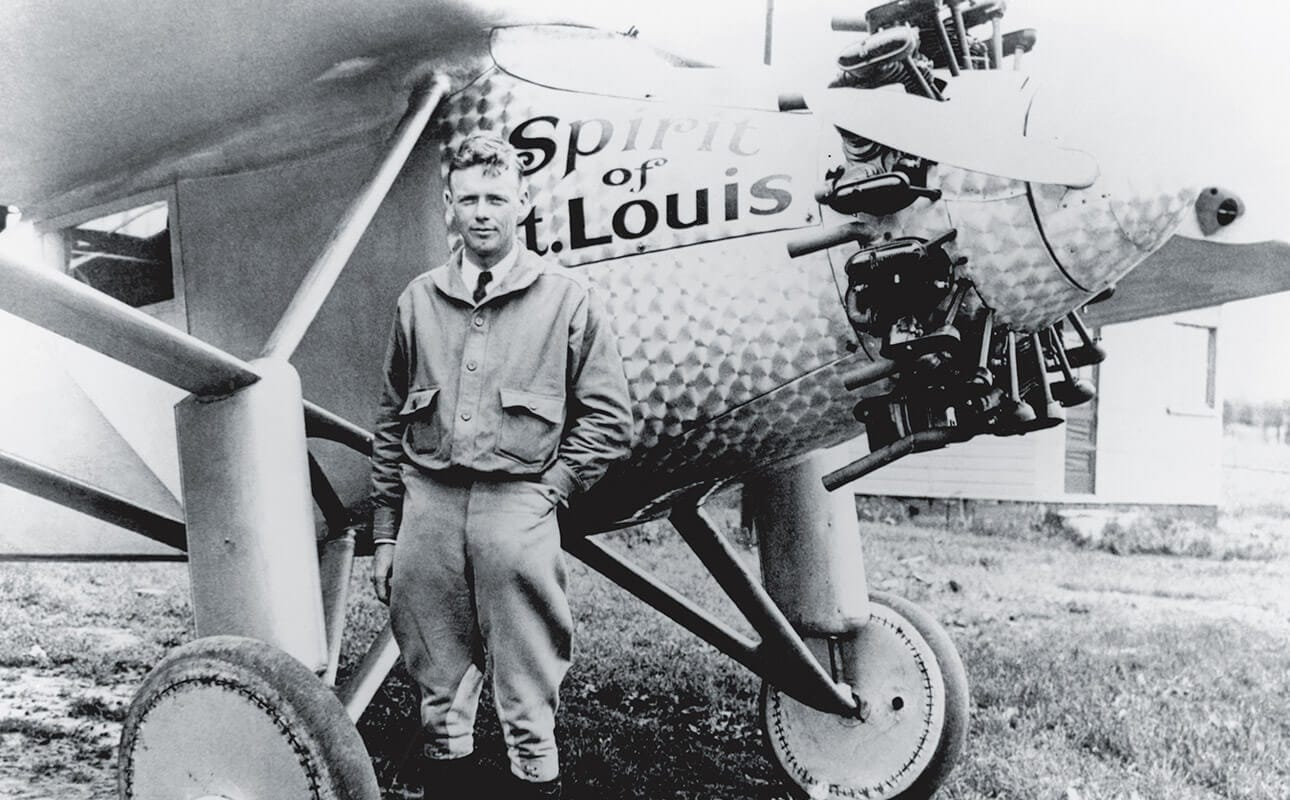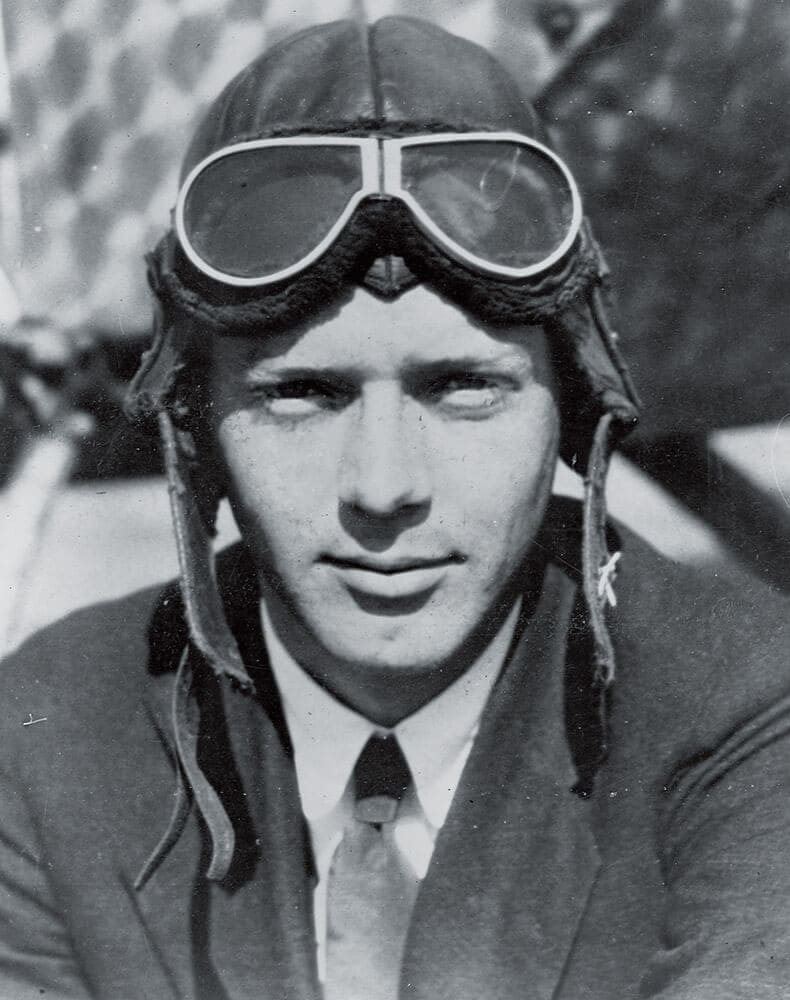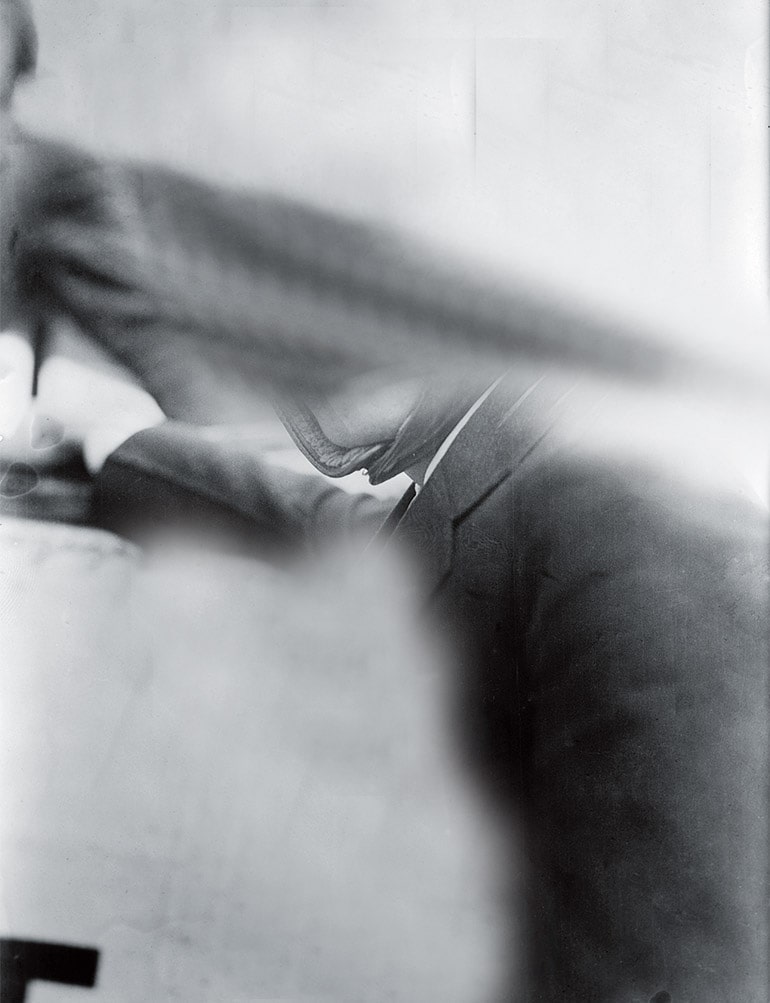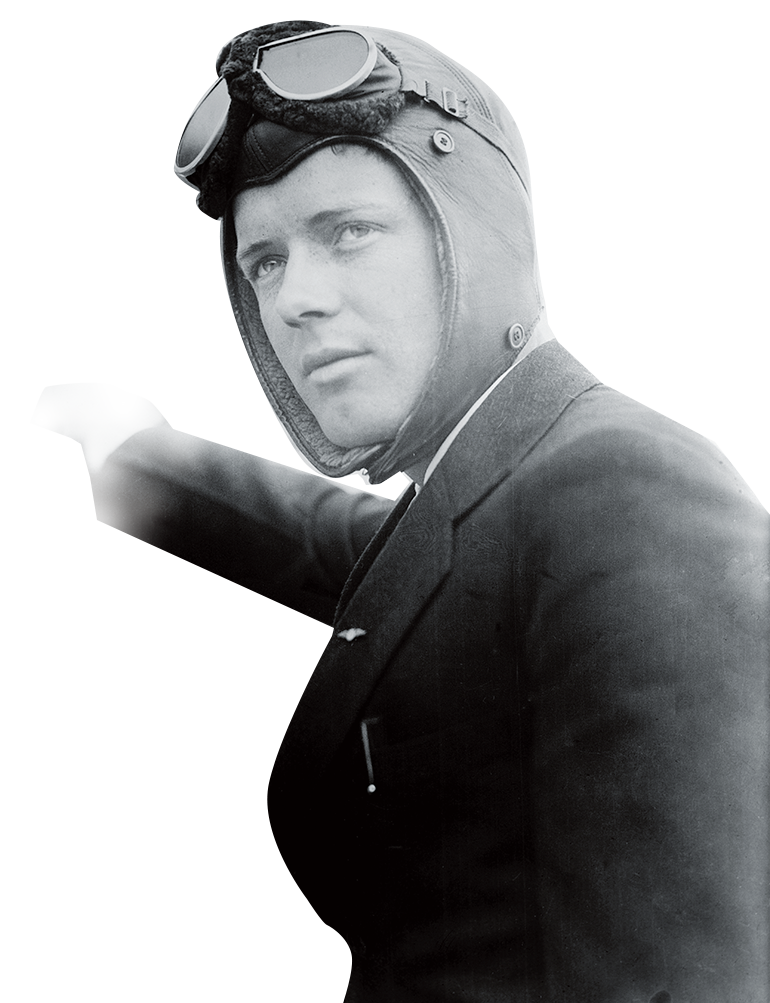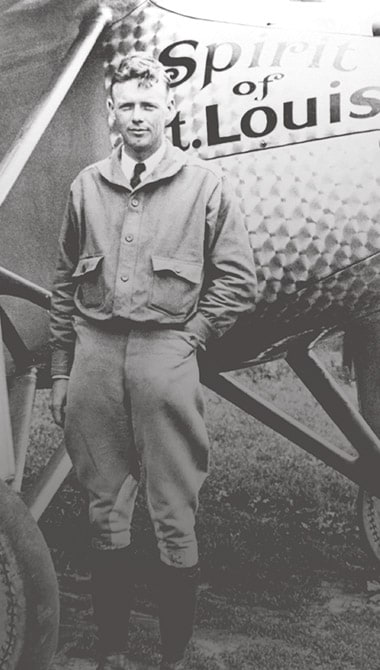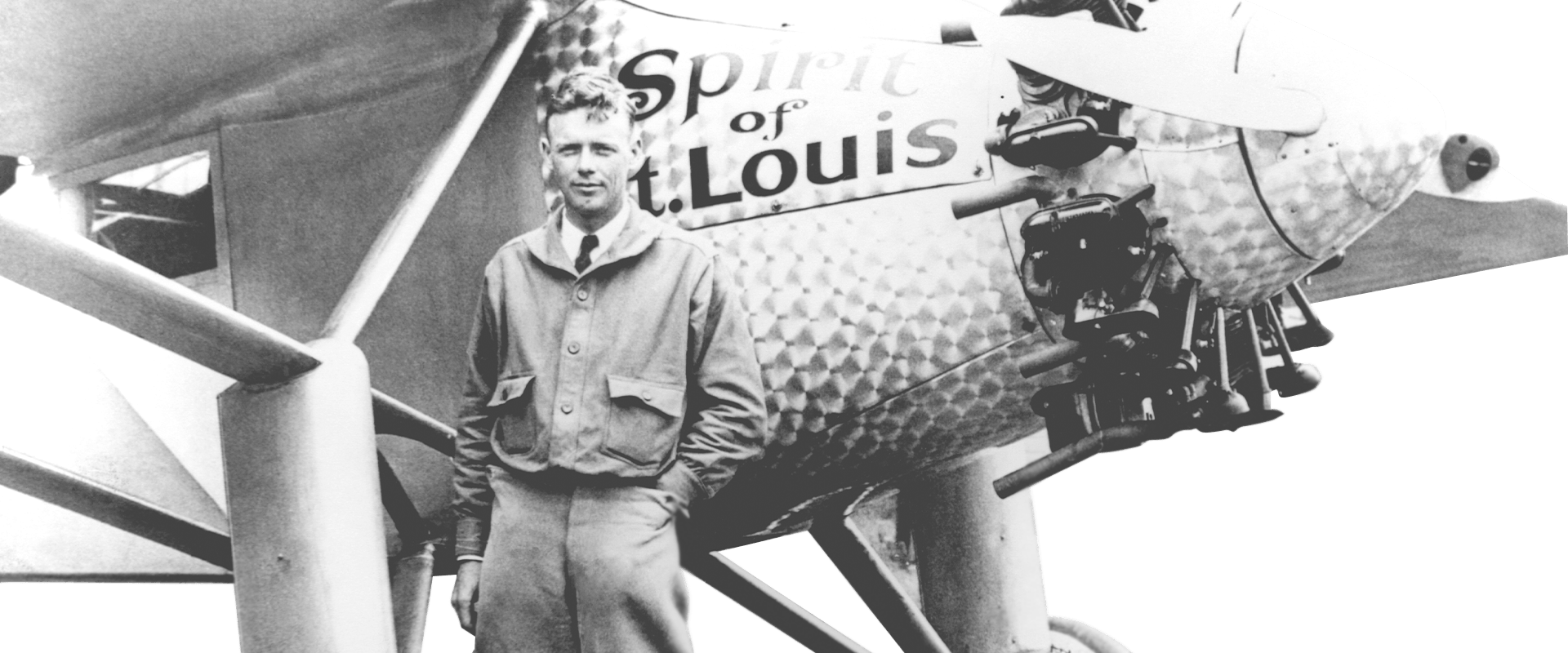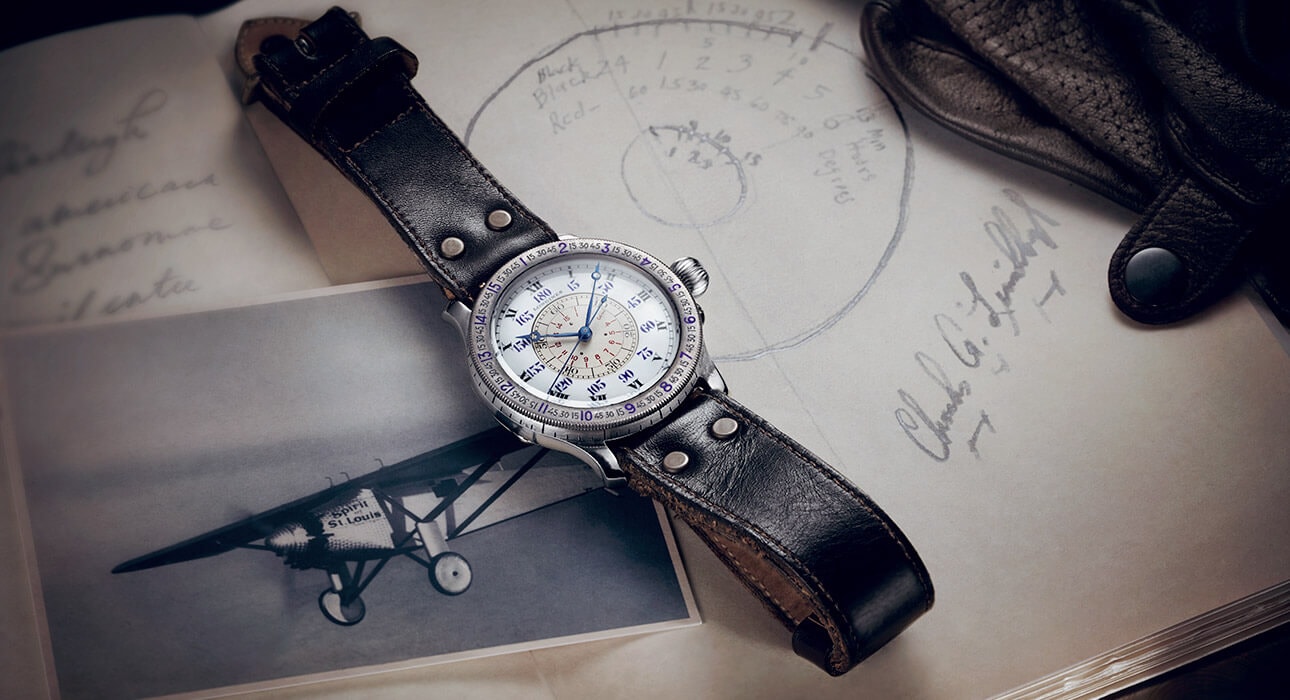
Longines Lindbergh watch of 1931.
1902-1974
New York, 20th May 1927. At 7:52 a.m. Charles Lindbergh’s airplane “Spirit of St. Louis”, loaded with 450 gallons (1,704 litres) of fuel, trundled down the airfield’s rain-soaked track and slowly lifted off. The 25-year-old pilot chose to carry extra fuel instead of a radio set. The former U.S. Air Mail pilot was soon faced with adverse weather conditions, including stormy clouds, ice and fog over Nova Scotia and Newfoundland (Canada). Lindbergh navigated by dead reckoning, relying only on his compass a few cockpit instruments and a watch. Over the open, featureless Atlantic, the skies cleared, but near Ireland Lindbergh struggled with fatigue. At 3:57 p.m. the wheels of the “Spirit of St. Louis” touched down at the Le Bourget airfield near Paris, 33 ½ hours and 5,850 kilometres (3,635 miles) after take-off. Timed by Longines, the official timekeeper for the “Fédération Aéronautique Internationale” (FAI), the achievement went down in history books as the world's first non-stop solo transatlantic flight.
Cool-headed bravery, nerves of steel and supreme flying skills had paid off. More than 100,000 ecstatic French well-wishers welcomed Lindbergh on his arrival. The twentieth century celebrated one of its first iconic figures. In June 1927, Lindbergh was awarded a US $ 25,000 prize from the New York hotelier Raymond Orteig for the first non-stop flight from New York to Paris.
Cool-headed bravery, nerves of steel and supreme flying skills had paid off. More than 100,000 ecstatic French well-wishers welcomed Lindbergh on his arrival. The twentieth century celebrated one of its first iconic figures. In June 1927, Lindbergh was awarded a US $ 25,000 prize from the New York hotelier Raymond Orteig for the first non-stop flight from New York to Paris.
Lindbergh’s success encouraged imitators. Many of them ended badly with 15 pilots dying trying to cross the Atlantic in 1927, mostly due to inadequate navigation technologies. In 1928 Lindbergh got lost near Cuba. After the incident, Lindbergh sought help from Philip Van Horn Weems (see next chapter) to improve his navigation skills. Inspired by Weem’s know-how, Lindbergh put forward a design for a timepiece that would serve as a proper aerial navigation instrument, able to calculate longitude and exact geographical position. The creation of this tool watch, equipped with a turning bezel to measure the hour angle of the sun as well as a rotating center dial, he entrusted to Longines, well-known for their precision in aviation. First produced in 1931, this timepiece came to be known as The Lindbergh Hour Angle Watch. It became an essential tool for an entire generation of pilots, navigators and pioneers on their journey to conquer the sky. Lindbergh rose to popularity in the 1930’s, but lost it due to his nationalist views, antisemitism and his refusal to enter into war with Germany. In his later years, Lindbergh became an avid environmentalist.
